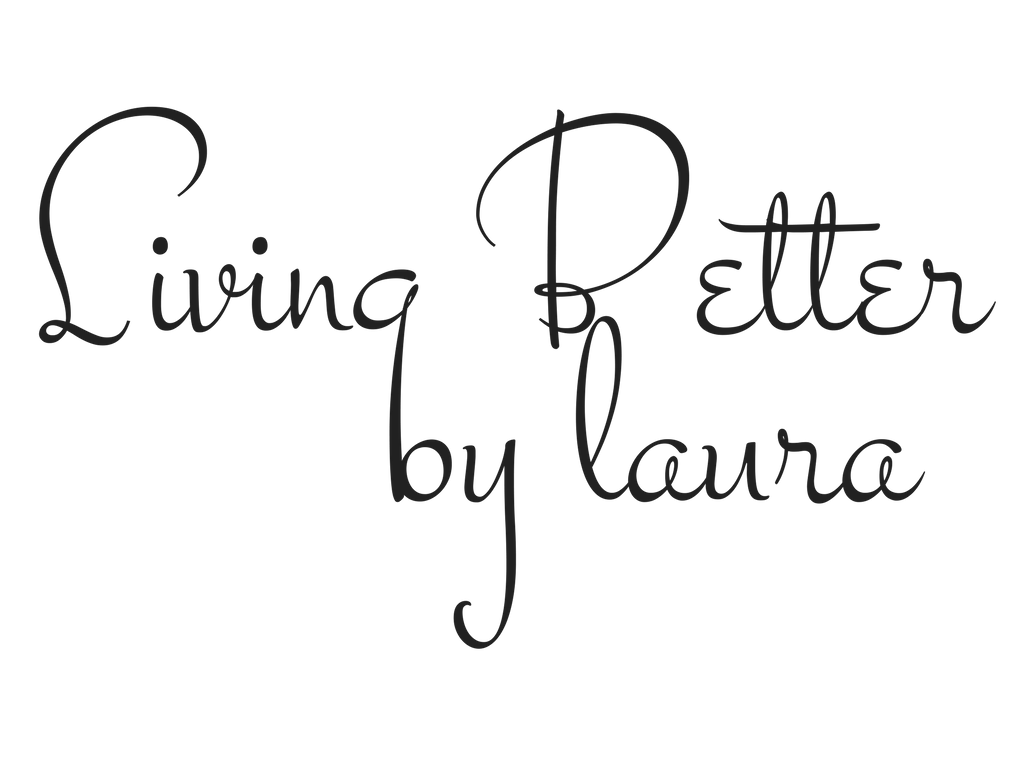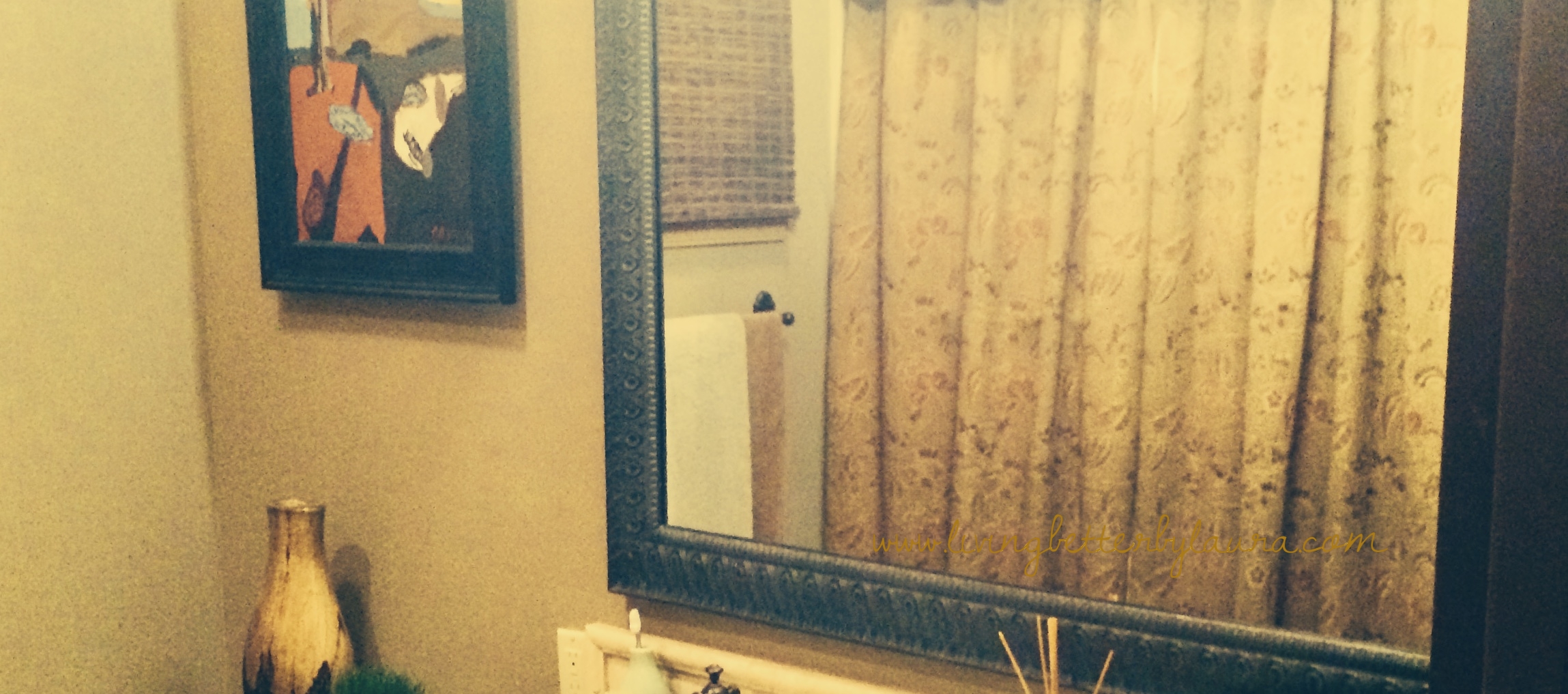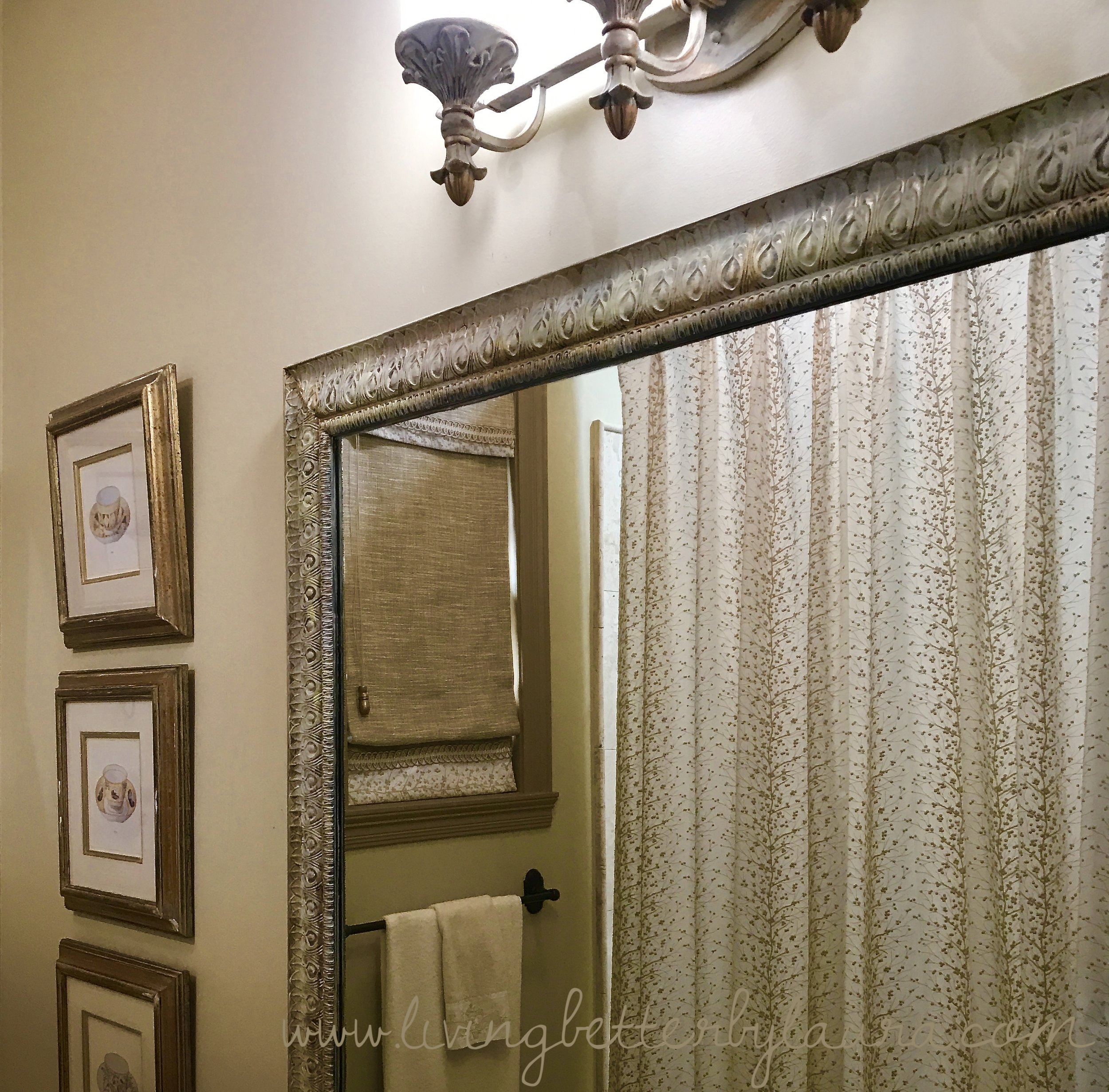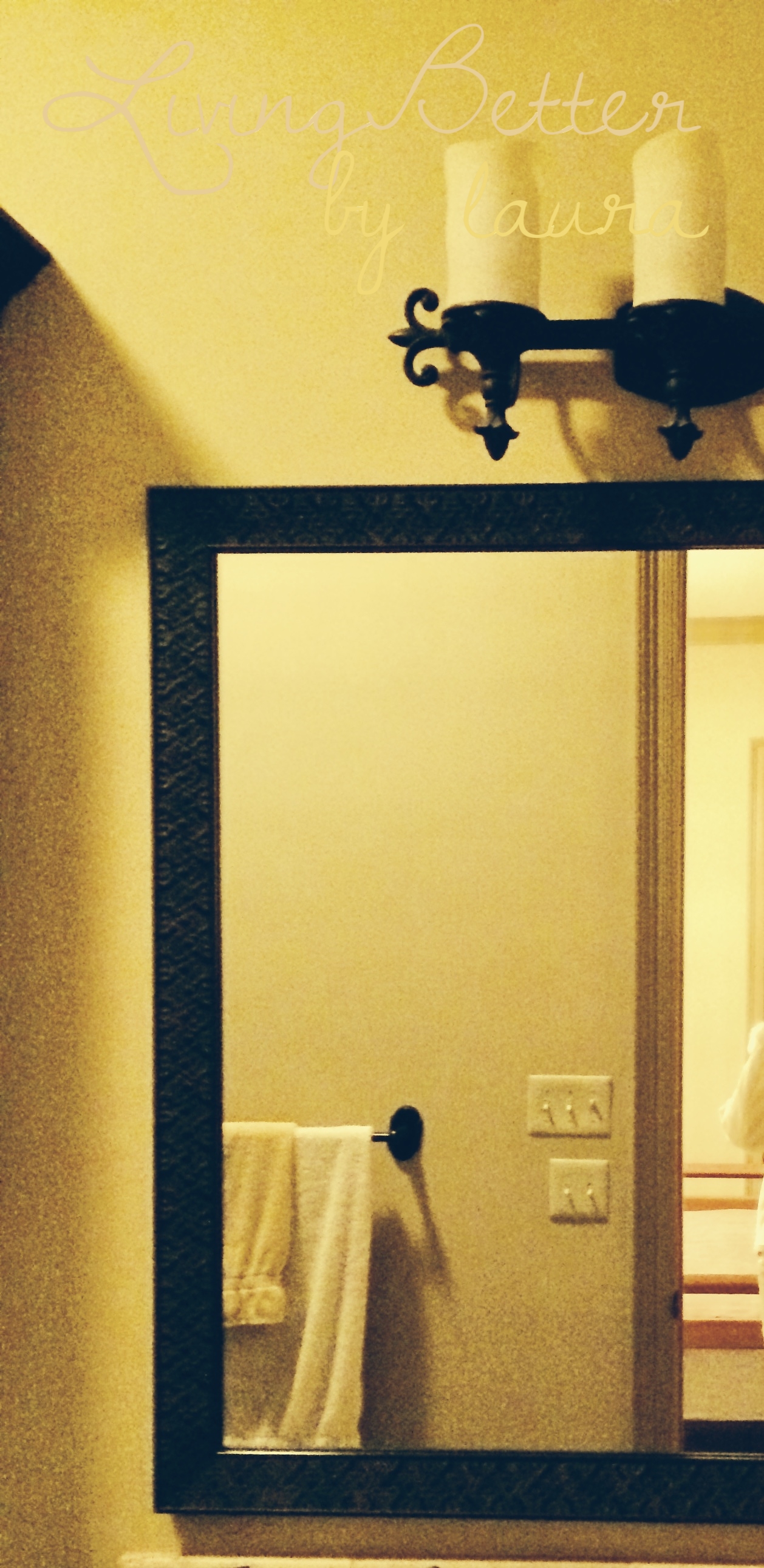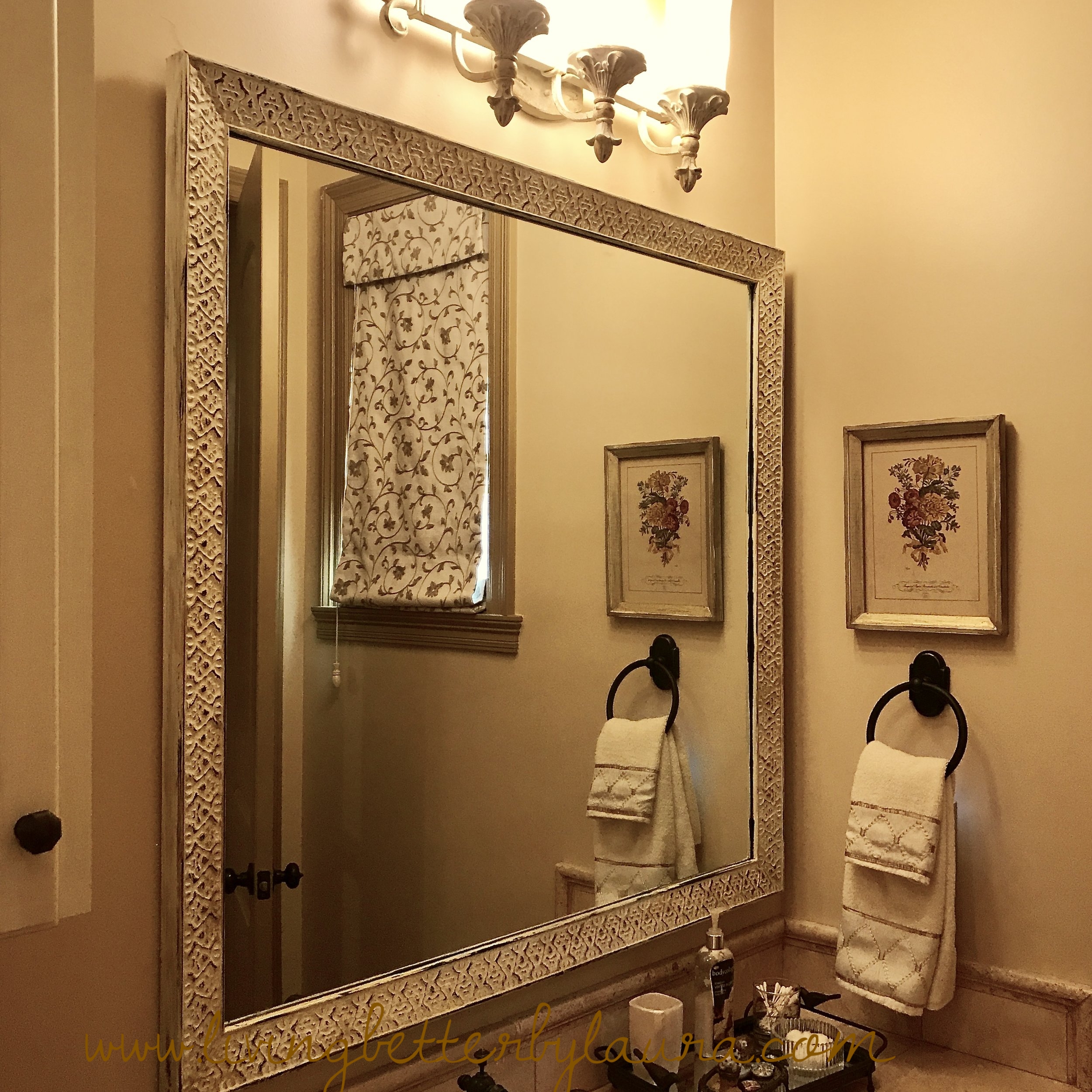How to Distress a New Mirror to Look Like a Beautiful Antique
/Distressing a new mirror to better blend it with the decor
Everything Old is New Again
Sounds absurd? Why would any sane person take a new, perfectly good mirror and make it look old and worn?
"Everything Old is New Again" is the title of a wonderful Peter Allen and Carole Baker Sager song from 1974. The lyrics say there's "no need to remember when, 'cause everything old is new again. Peter and Carole's lyrics wax nostalgic for the older, gentler ways of society and romance.
That same philosophy is why we would consider messing up brand new pieces of furniture. Wanting to create a distressed or shabby chic style comes from a love of having an "original". It comes from a desire to put a personal imprint of your personality into your home. Farm house, country french, industrial chic are all styles that impart a warm, lived in look to a home with a sense of uniqueness.
Any home item lends itself to distressing. But mirrors can be THE ideal piece to give this DIY technique a try if you're new to the art. A mirror is a simple decor touch that can transform a room. Render that one piece unique and the room can undergo a radical transformation. Distressing is an easy, inexpensive was to make your home look rich!
A fabulous antique Louis Phillippe mirror has a pretty price tag. Even a basic mirror from your local home store can be pricey. But, with distressing, any cheap, second-hand, or kinda hideous mirror can be converted into something gorgeous! All it takes is a few layers of chalk paint, easy sanding and, perhaps, a bit of gilding and dark wax.
“Don’t throw the past away
You might need it some rainy day
Dreams can come true again
When everything old is new again”
Why do we love antique furniture? Oh, let me count the ways. Or, it's distant cousin - antiqued and distressed furniture? What makes something so old, so precious? Three words - uniqueness, beauty, and scarcity. All three together equals value!
Antiques Are Unique
The country of origin, age, era, condition, regime and historical significance all play a role in scarcity and value
As a rule, a true antique is one of a kind. In the past furniture was handmade, not mass produced or machine made. Each one is different, unique. Done by hand, an artisan’s carving would be different on each piece. The grain of the wood, paint or stain and embellishments would vary from piece to piece. An antique cannot be “cookie-cutter”.
Whereas, specific pieces ordered from a catalog or, even, the most exclusive interiors store are supposed to look exactly alike. You expect it. You chose it because you like the exact way it looks. You don’t want it to vary from the picture or showroom.
However, antiques aren't the only way to be unique...
Options for Owning a Unique Piece of Furniture
Custom Made Pieces
Another way to obtain out-of-the-ordinary pieces is to order custom made.
You can tailor an item using your own fabric rather than choosing from the manufacturer’s line. But there is nothing to prevent anyone else from choosing something similar. Or, you can find a builder and have a piece made to your specs. You can alter the paint or decorative details based on your desire. Voila! Custom furniture from scratch. It would be a unique, one of a kind item. Your price tag may show it too!
But, it won’t have the value of a good antique unless...
Top Modern Day Designers
Unless you have a piece from one of the modern-day sought-after designers.
Every era has it's prized and talented artisans. Fortunately and unfortunately, when that talented artist dies or stops producing - their artwork's value skyrockets. Once again, the rule of thumb is scarcity. Here is a list of some of the modern era's genius designers. Their pieces are highly valued - though not quite old enough to hit the 100-year mark and be considered an antique. Most of these artists are no longer with us so pieces are limited and highly prized.
Born Charles-Édouard Jeanneret - called Le Corbusier.
Known for: Pioneering modern furniture.
Famous pieces: LC4, a chaise lounge. Years active: 1914 to 1965Charles & Ray Eames - husband and wife team.
Known for: Pioneering California and American Modernism.
Famous pieces: Eames Lounge and Ottoman, molded fiberglass lounge chairs.
Years active (as a duo):1940s to 1970s (Charles, 1907-1978; Ray, 1912-1988)Eero Saarinen.
Known for: Designing the St. Louis Arch.
Famous pieces: Executive chair, Tulip Table.
Years active: 1940 -1961Ludwig Mies van der Rohe.
Known for: Minimalism.Famous pieces: Barcelona Chair, Brno Chair.
Years active: 1908 - 1969Marcel Breuer.
Known for: Bauhaus design.
Famous piece: Wassily chair.
Years active: 1920s to 1981Arne Jacobsen.
Known for: Mid-century design.
Famous pieces: Egg Chair, Swan Chair. Years active: 1924 to 1971
Here are a few of today’s other designers, still alive and creating tomorrow’s valuable icons: Jake Phipps, Stuart Haygarth, Peter Stern, Karim Rashid, Freyja Sewell, Ron Arad, https://www.davidlinley.com/, www.zaha-hadid.com/ Group (Zaha Hadid, herself died in 2016).
Antiques are Valuable
A gorgeous french armoire made by hand
Because they're one-of-a-kind and old they can become valuable by reason of scarcity.
A good antique's handmade status makes them a work of art. One reason, is the concept of time. It could take days, weeks or months to obtain the materials, hand cut sections, and put the pieces together using rudimentary (and also handmade) tools. That’s right - no electricity. If metal was used for hardware or joints, it would be hand forged.
If the piece has been maintained in good condition, this also increases value. Along with rarity, if the craftsman signed the piece this, too, can increase value. And if that person was a famous historical figure add a few more decimal places to that price tag. Artisans weren’t able to craft huge numbers of pieces by hand during their lifetime. Whereas, today, machines can produce an almost unlimited number and at a rapid pace. Not mentioning the new concept of 3D printing of items, large and small in scale.
Often, antiques have broken elements. If repairs are made using new materials or modern processes, it can decrease in value. When a fix is performed using original methods, or old, reclaimed materials, it can retain value. The best repair artists use old wood and metal. They incorporate historical furniture-making techniques like dovetail joints, tongue and groove, and old stains.
Just because a piece is an antique doesn’t make it valuable. But, it increases the chances that it could be.
Scratches and patina are expected when items are lovingly used. But the better the condition, the greater the value. There's a beauty and historical significance to crafts of long-gone eras. There are endless categories of antique collectibles - Tiffany lamps, Duncan Phyfe drop leaf tables, silver Revere bowls made by THE Paul Revere, country french furniture, old Paris porcelain, Cristolfe silver flatware and more.
Antiques Retain their Value
The beauty of hand carving on a antique French console
Time marches on and pieces get older and fewer. Inevitably, more items get damaged or destroyed. Scarcity becomes increased by the effects of time.
Decorating trends come and go but having a great antique is like possessing a work of fine art. It's use in interior design never goes out of style.
Van Gogh painted a certain number of pieces. If he had painted two of the same scene, the two paintings would never be the same. The concept applies to all forms of art, including furniture, porcelain or jewelry.
An antique can be an investment which new pieces rarely are (excepting the afore-mentioned famed modern designers). Have you tried to sell expensive but new, jewelry or furniture? If you get half the price paid for it you're lucky. The mark up on retail can rarely be recouped.
Antiques are Irreplaceable
Antiques come in all shapes and sizes. Antiques shown here: Persian rug, stool recovered with new fabric, makeup vanity with mirror inside lid, and blue and white porcelain
A one-of-a-kind, or rare piece, is irreplaceable. You may find a similar piece. But it can never be an exact replica - when created by hand or using obsolete methods.
Over time, the bulk of an artisan’s pieces won't survive - due to war, fire, insects, and rot. The older the era, the greater the chances are that fewer of a craftsman’s pieces will exist.
Antiques Have a Patina
countless families have enjoyed meals on this 18th century antique French draw table over time, including mine. The Chairs are reproduction that I have refinished - post to follow soon.
The definition of patina, when it comes to antiques, has two meanings - both having to do with loveliness. The green color that copper or bronze develops with age is one definition of patina. There are easy DIY distressing technique to induce an artificial patina and create that gorgeous, greenish copper color. I'll explain these in a later post.
The second patina is the fine etch-work of scratches, swirls, and sheen from polishing and daily wear and tear. Pearls, silver, and furniture all develop a patina from loving use and time. DIY distressing or "antiquing" a new piece can give it a semblance of the knocks, layers, and depth of color gathered by age and function. In other words - distressing mimics the unique beauty of an antique. We'll get to the how-to in the section below.
“Patina - the surface appearance of something grown especially beautiful with age or use.”
Patina, the aging of use - is the “story” of the piece.
We can never know the exact history of a particular piece. Most valuable pieces were crafted before cameras were invented. If someone didn’t paint, draw or write about it, then its history can only be inferred. We can make an educated guess as to how a crystal goblet, a buffet, or a dining table was used. We can pinpoint the era and region from whence it came. And, we can know the tales and lore of that time. The rest of the romance comes from our imagination.
I enjoy history. Combine that with a vivid imagination and the story weaves itself. I can picture a French family sitting around my antique French draw table when it was newly made. Visions of everyday meals and holiday rituals spent in the dining room or "salle a mange” drift through my mind. I can smell the mouth-watering aromas of the Coq Au Vin wafting from the “cuisine” - the French word for kitchen or cooking.
Ahhhh, back to the present.
Go From Mundane to Magnificent: Distressing or Antiquing New Pieces
Back to the excellent reasons why distressing new objects enhances interior decor. We distress pieces to give the wear and depth of layers that an antique would naturally acquire through age and use. That worn and used look is desirable and interesting. It gives a piece complexity and variety.
In other words - distressing mimics the unique beauty of an antique.
Reasons We Love The Distressed Look
Distressing helps the:
Inexpensive piece look expensive.
New piece incorporate your signature style or home decor
Mass produced piece appear unique.
Mismatched piece blend better into a room or interior design.
Ugly piece become a thing of beauty.
Unbecoming object acquire a distinctive flair that draws the eye to the piece.
Common object become a work of art.
Clumsy - you will never worry about knocking around or scratching up a distressed piece - the more dents, the better.
Non-artistic among us - these DIY mistakes are easily fixed. It's difficult to mess up. Hey, it's supposed to look worn out and imperfect!
AND BEST OF ALL: You can't scratch or dent a distressed piece...It's already been messed up, on purpose!
Distressing a New Mirror - an Easy Way to Transform a Room
The ultimate challenge. This is an inexpensive, boring, full-length mirror. It's to be used as a dressing mirror for my closet. You will notice this mirror is blah - totally lacking in style. Here is the initial coat of paint being applied.
STEP #2: I used oatmeal and yellow beige acrylic paints to add different shades to the base of Old Ochre. This mimics the old layers of paint found on worn, well-loved pieces. I added gold paint to the inset edge - see optional step.
These are the shades I used in Step #2 - Oatmeal and yellow beige. The Oatmeal has a green cast to it. The walls of my closet are a gold-green hue. These shades mimic layers of paint found on many old pieces.
This is the result After one coat of Annie Sloan white wax.
STEP #6: Scraping the paint off of the glass and cleaning the mirror was the final step. It took just a few minutes to do both.
The finished product! For one of my next projects, I'm going to chalk paint that chest. I'll change the stark brown finish to something similar to the mirror. Watch for the post soon!
STEP #1: I used 2 coats of Annie Sloan Chalk Paint in Old Ochre
Optional: I used two different shades of gold acrylic paint during step #2 - a base of Glorious Gold then Medieval Gold in different spots. This imitates the burnishing of gold Leaf that occurs with age.
STEP #3: Edges, corners, and parts of the raised areas were sanded. I concentrated on areas that, naturally, get worn from handling over time. TIP: I don't tape off the glass. I find taping takes longer than scraping. scraping paint from glass is quick and easy.
STEP #4: I went over the entire frame with one coat of Annie Sloan White Wax using one of Annie's wax brushes. A base coat of clear or white wax is needed before a dark was - so that the wood doesn't "grab" the dark wax. It makes it easier to control the amount of dark stain. I chose Annie's white to pale out the paint colors and dull the contrast for the Base wax in this case. Most usually I use the Clear Version. After the coat of wax I immediately buffed the frame with an old, soft cotton rag, formerly a tee shirt.
STEP #5: I only dabbed a layer of dark wax in the areas where natural staining occurs like seams and corners in this case.
I also added dark wax in the corner of the gold inset. Then I buffed all areas of the dark wax with an old tee-shirt.
Loving our new dressing mirror...puppies too!
Final Thoughts on Living Better at Home
And that's it! It's easy to distress a new mirror to give it more character. You can make an inexpensive mirror look more costly. Unlike the mirror shown in this post, distressing or antiquing, works best on a mirror whose frame has some molding or carving. The paint and wax can pick up the design and give it more depth and aging. See the before and after photos of my bathroom mirrors shown above for some good examples. But any mirror, even this one with very little detailing, can benefit from this simple technique.
Have you tried distressing, a.k.a. antiquing, of mirrors or other pieces? What paints do you like to use? Tell us about it in the Comment Section below. Feel free to post some photos of your finished distressed piece, especially mirrors - we'd love to see your project. Cuz we love DIY!
If you enjoy DIY and home decor watch for my, upcoming, post on the popular shades of blue to use in home decor.
